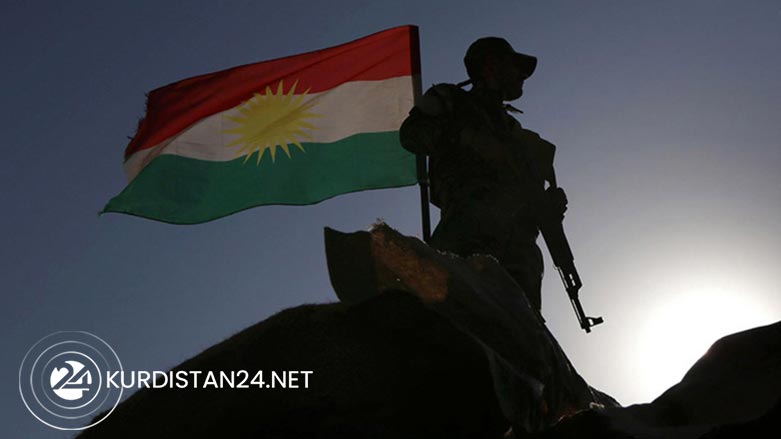Peshmerga helped thwart ISIS chemical attacks in Europe

WASHINGTON DC (Kurdistan 24) – The Kurdistan Regional Government (KRG) was closely involved in helping the US stop ISIS from implementing plans to carry out terrorist attacks using chemical weapons in Europe, The Washington Post reported on Monday.
The Post's report, based in part on files from the KRG's Counter Terrorism Department, explains that in 2014, as ISIS burst out of Syria into Iraq, seizing nearly a third of the country, it also developed plans to use chemical and if it could, even biological weapons.
Understanding ISIS
The highly-regarded German news magazine, Der Spiegel, has explained, in an article entitled Secret Files Reveal the Structure of Islamic State, that the core of ISIS is the former Iraqi regime. That would, indeed, explain ISIS' inclination toward weapons of mass destruction.
Based on captured ISIS documents, the article is a leak from German intelligence, and it is the most informed, authoritative account of the terrorist group to date.
That view is also similar to the KRG's understanding of ISIS, as explained to Kurdistan 24 by the late Najmaldin Karim, Governor of Kirkuk Province throughout the fight against ISIS: it is not primarily a group of religious fanatics seeking to establish a purer form of Islam. Rather, ISIS (and its predecessor, al-Qaida in Iraq) is dominated by individuals deposed from positions of power and privilege who seek to regain their lost status. They are not true believers. Rather, they use religious extremism as a mobilizing force.
Thus, although the cleric Abu Bakr al-Baghdadi is regularly described in the US media as the leader of ISIS, he is probably better understood as a figurehead, while real power is exercised by ruthless men in the shadows.
New Dimension to 2014 ISIS Threat: Chemical, Biological Agents
As a senator, US President Barack Obama opposed the 2003 war in Iraq, which helped him win the presidency in 2008 after Americans turned against that war.
As president, Obama was keen to withdraw US forces from Iraq—which he did in December 2011. Yet less than three years later, he was obliged to return US forces to Iraq to confront ISIS, as a US bombing campaign against the terrorist group began in August 2014.
It was understood, at least publicly, that Obama's about-face was precipitated by the threat to both Erbil and Baghdad that ISIS posed after the Iraqi army collapsed before its onslaught.
The Post report, however, adds a new dimension to the ISIS threat, as it appeared in 2014: the threat of terrorism using chemical or biological agents.
Baghdadi met with Salih Sabawi following ISIS' capture of Mosul that summer. Sabawi was a 52-year-old Iraqi who had trained in Russia (then the Soviet Union) and became a skilled technician in Saddam Hussein's chemical weapons program.
"Within six months" of that meeting, the Post explained, "under Sabawi's direction," ISIS "would manufacture mustard gas," as well as "bombs and rockets filled with chlorine."
But ISIS' ambitions "were much broader," as revealed in KRG intelligence reports which the Post reviewed. The KRG reports "shed new light on Sabawi," along with "the ambitious plan by [ISIS] leaders to develop and use weapons of mass destruction in Iraq and abroad."
Through electronic surveillance, US officials learned that "Sabawi was working to produce powerful new weapons:" botulinum toxin, ricin, and anthrax.
All three are biological agents. As dangerous as chemical agents are, biological agents can be far more lethal. According to the US Defense Department, anthrax is "100,000 times deadlier than the deadliest chemical agent."
The discoveries about ISIS' plans for chemical and biological production added new concerns about what the terrorist group might do. Several current and former US officials described to the Post "an urgently planned military operation," which was "conducted in 2015 by US Special Operations forces with assistance from Kurdish Peshmerga."
The military operation aimed to "kill Sabawi and crush the weapons program before it reached maturity." That happened in January 2015, when "a US aircraft, most likely a drone," struck Sabawi's car with a missile, killing him and a son traveling with him.
CBW Threat not Necessarily Eliminated
ISIS aimed "to create a large stockpile consisting of multiple types of chemical and biological agents to be used in military campaigns as well as in terrorist attacks" against major Western European cities, the Post reported.
"We know they are also interested in US military bases on the [European] continent, or really anywhere," a senior US official told the paper. "They were ultimately going to go with the easiest target."
Sabawi's assassination was followed by a targeted campaign to destroy all facilities associated with ISIS' chemical and biological weapons programs, while "most of its senior operators" were killed or captured.
However, ISIS essentially inherited Saddam's very considerable unconventional weapons programs—or at least those components that survived the years of conflict. In addition, when it has suited the Syrian regime, Damascus has supported ISIS, and Syria maintains such programs.
The Post concluded by noting that the chemical and biological threat posed by ISIS has not necessarily been ended.
"Some of Sabawi's former accomplices escaped the initial bombing campaign," it noted, "and a few are believed to be still alive, the officials said."
